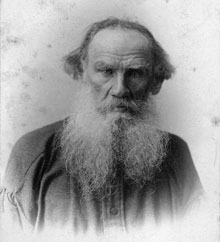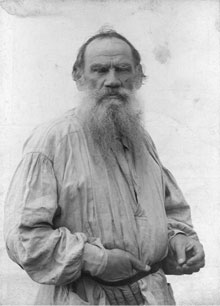EVERYMAN CLASSICS LEO TOLSTOY Biography & Authors Voice
Tolstoy is to the novel what Shakespeare is to drama. They are two of the world's two greatest writers, each in his own particular form, partly because they share the gift of incomparable insight into human nature.
In Tolstoy, the gift extends beyond humanity. Turgenev recounts a happy day spent on the Tolstoy family estate. After lunch, Tolstoy and Turgenev sat on the seesaw together, then wandered over to a tethered horse. Tolstoy stroked it, whispered in its ear, and told them what it was thinking. 'I could have listened for ever,' Turgenev says. 'He had got into the very soul of that poor beast and taken me with him.' Tolstoy does just that in Strider: The Story of a Horse, where the horse is its own narrator. Similarly, in Anna Karenina, he takes us directly into Anna's stream of consciousness in the hours before her suicide, so forestalling James Joyce's Ulysses by fifty years.
Tolstoy's writing is characterised by its simplicity, wealth of realistic detail, and uncompromising morality. As a young man in Paris, he witnessed an execution - a formative experience. His diary notes: 'A stout, white, strong neck and chest. He kissed the Gospels and then – death. How senseless! The impression made was a strong one and not wasted on me. Morality and art. I know, I love, and I can.'
Tolstoy knows and makes us understand his characters, and extends no love to the institutions he knows to be corrupt. That is the morality of his art. His early reticence prompted Chekhov to praise Anna Karenina for 'the correct presentation of a problem' without providing its solution. His satiric irony and his own convictions became increasingly overt in his later fiction. As an anarchic pacifist and a Christian repudiating the authority of the Russian Orthodox church, he was censored by the state and excommunicated by the Holy Synod shortly before his death.
His highest aim was simply to tell the truth as he saw it. This was the artistic credo he formulated at the beginning of his artistic career, and held to its end. Sevastopol in May 1855 ends with a question and its resonant answer:
Where in this tale is the evil that should be avoided, and where the good that should be imitated? Who is the villain and who the hero of the story? All are good and all are bad […]
The hero of my tale – whom I love with all the power of my soul, whom I have tried to portray in all his beauty, who has been, is, and will be beautiful – is Truth.












